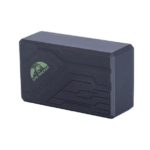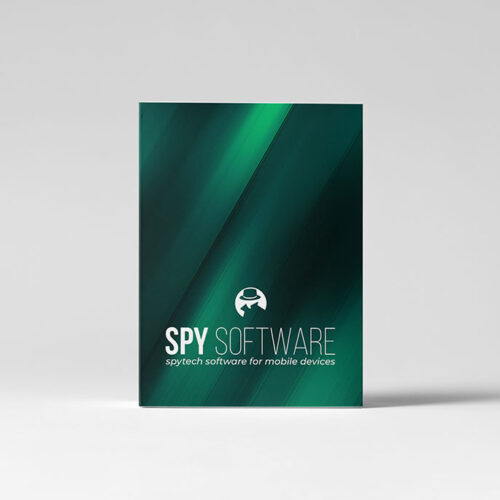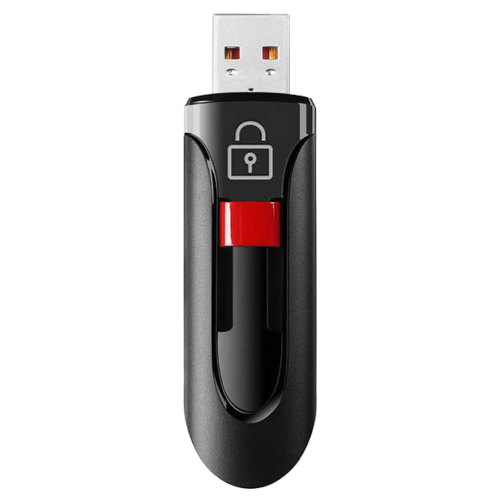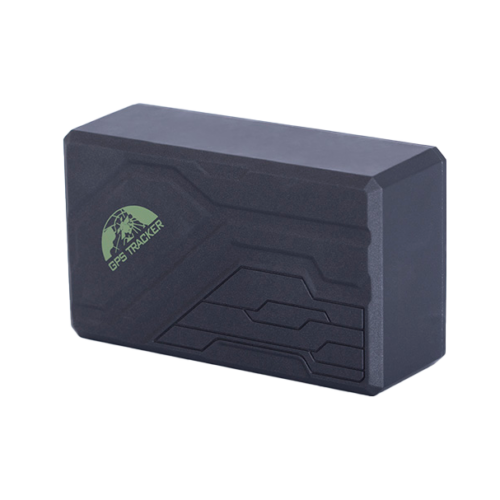In today’s digital age, where smartphones have become an integral part of our lives, concerns about privacy and security have become more prevalent.
With the increasing reliance on mobile devices for personal and professional activities, many individuals find themselves wondering, “Can someone remotely screenshot my phone?”
The question of remote phone screenshots arises from the need to protect sensitive information and maintain personal privacy. As we store an abundance of personal data, including photos, messages, and confidential documents, on our phones, the possibility of unauthorized access or remote monitoring can be worrisome.
Additionally, the rise in cyber threats and privacy breaches has further fueled these concerns, making individuals more vigilant about their phone’s security.
The concept of remote screenshots involves the ability for someone to capture images of your phone’s screen without your knowledge or consent. Whether it’s a concerned parent wanting to monitor their child’s online activities or an individual worried about their personal information falling into the wrong hands, understanding the feasibility and implications of remote phone screenshots is crucial.
In this blog post, we will delve into this topic to shed light on whether it is indeed possible for someone to remotely capture screenshots of your phone. We will explore the various methods used, potential vulnerabilities that can be exploited, and the legal and ethical aspects surrounding this practice.
Besides, we will provide practical tips and measures to protect your phone’s security and maintain control over your personal information.
By gaining a deeper understanding of the possibilities and limitations of remote phone screenshots, you will be better equipped to navigate the digital landscape, safeguard your privacy, and make informed decisions regarding your phone’s security.
Uncovering the Secrets of Remote Screenshots
Remote screenshots refer to the process of capturing images or recordings of another person’s phone or computer screen without their knowledge or consent.
It involves gaining unauthorized access to the target device remotely and discreetly capturing visual information displayed on the screen.
The practice of taking screenshots has gained popularity as a means of collecting evidence regarding the activities on someone’s phone.
By capturing visual records of the screen, individuals can swiftly identify any suspicious or worrisome behavior, enabling them to take immediate action and address the situation appropriately.
Amidst all this, you may also question can a phone be hacked through a remote screenshot.
Simply taking a screenshot itself does not directly lead to hacking. However, the risk of being hacked can arise if the screenshot contains sensitive information or if it is shared or submitted to platforms or accounts that are vulnerable to hacking.
Who Can Benefit from Remote Screenshots
Screenshots serve as a valuable means to gain insight into the activities taking place on the cellphones of individuals such as employees, children, partners, and friends.
Screenshots are visual proofs of their activities in your hand.
Instead of relying on guesswork or assumptions, screenshots provide concrete evidence of their actions, enabling a clear understanding of their digital behavior. With these visual proofs at your disposal, you can promptly address any suspicious or concerning findings, taking necessary steps to mitigate potential risks.
By taking screenshots, you can effectively monitor and track the content your children are engaging with on their cell phones. This allows you to stay informed about what they are reading, downloading, and discussing, ensuring their safety by promptly identifying and averting any potentially harmful situations.
Likewise, the ability to monitor the actions of your partner, employees, or others through screenshots provides valuable insights into their behavior and helps maintain trust and security in various relationships and professional settings.
However, it should be kept in mind that this practice can raise significant privacy concerns and ethical considerations.
How Remote Screen Peeking Works
Remote screenshots typically rely on various techniques and technologies to covertly capture screen activity.
One common method involves using specialized spyware or monitoring applications installed on the target device.
These applications operate in the background, discreetly capturing screenshots at regular intervals or in response to specific triggers. The captured screenshots are then transmitted to a remote server or a designated monitoring device for further analysis.
Another approach to remote screenshots involves exploiting vulnerabilities in operating systems or apps.
Sophisticated hackers may use zero-day exploits or known security weaknesses to gain remote access to a device and take screenshots without the user’s knowledge. This method often requires a high level of technical expertise and is generally associated with malicious activities.
Different Methods of Capturing Remote Screenshots
When it comes to capturing remote screenshots, there are various methods that individuals may employ to discreetly obtain visual records of someone else’s device screen.
These strategies leverage different techniques and technologies, each with its own set of capabilities and limitations. In the following sections, we will explore some of the different methods utilized for capturing remote screenshots, shedding light on the intricacies of each approach.
1. Remote Administration Tools (RATs)
Remote Administration Tools (RATs) are software tools that enable remote control and monitoring of a device. They are typically designed for legitimate purposes, such as IT support or remote access to a computer. However, in certain contexts, RATs can be misused for unauthorized remote surveillance.
One capability that some RATs offer is the ability to capture screenshots in real-time or on-demand. This means that the person with remote access can see exactly what is being displayed on the target device’s screen, almost as if they were physically present. The remote user can initiate the screenshot capture and receive a visual representation of the screen contents, providing them with a real-time view of the target device’s activities.
The screenshot functionality of RATs can serve various purposes. In the case of legitimate usage, it can facilitate remote technical support, allowing technicians to diagnose and troubleshoot issues by viewing the device’s screen. However, when employed for unauthorized surveillance, it can be a significant invasion of privacy.
It is important to note that using RATs for remote screenshot capture without proper authorization is illegal and unethical. Unauthorized access to someone’s device, even with the intention to monitor their activities, infringes upon their privacy rights. It is essential to respect privacy boundaries and obtain explicit consent before using any form of remote administration tool or monitoring software.
2. Exploiting Remote Access Features
Exploiting remote access features involves taking advantage of functionalities like screen sharing or remote desktop applications to capture screenshots without the user’s awareness. These features are often intended for legitimate purposes, such as facilitating collaboration or providing technical support. However, in the wrong hands, they can be misused for unauthorized surveillance or capturing sensitive information.
In this method, the attacker or individual seeking remote access may employ social engineering techniques to trick the user into granting them authorized access to their device. This could involve impersonating a trusted entity or exploiting vulnerabilities in the target’s security awareness. By convincing the user to install malicious software or grant remote access permissions, the attacker gains control over the device, enabling them to capture screenshots remotely.
Compromised credentials can also play a role in this method. If the attacker manages to obtain valid login credentials for remote access applications or services, they can leverage these credentials to gain authorized access to the target device. Once access is granted, they can proceed to capture screenshots without the user’s knowledge or consent.
It is important to recognize that exploiting remote access features for unauthorized screenshot capture is a serious invasion of privacy and often constitutes illegal activity. Proper security measures, such as strong passwords, two-factor authentication, and regular monitoring for suspicious activity, are essential to mitigate the risks associated with remote access vulnerabilities.
Users should exercise caution when granting remote access privileges and be vigilant about protecting their login credentials. Additionally, organizations and service providers should implement robust security measures to prevent unauthorized access and monitor for any potential misuse of remote access functionalities.
3. Network Snooping
Network snooping is a method employed by attackers to capture screenshots by intercepting network traffic. It involves monitoring the data packets transmitted between the target device and the network, allowing the attacker to capture screen images that are part of the transmitted data.
In this method, the attacker positions themselves on the network pathway between the target device and its destination, such as a website or server. They utilize specialized tools or software to capture and analyze the network traffic passing through their position. By examining the data packets, the attacker can identify those that contain screen images or other visual content.
Once the attacker identifies the packets containing the desired screen images, they extract and reconstruct them to obtain the captured screenshots. This process allows them to gain visual insights into the activities taking place on the target device’s screen without the user’s knowledge.
Network snooping is a covert method that requires technical expertise and knowledge of network protocols. It can be particularly concerning because it allows attackers to capture sensitive information, including login credentials, personal messages, or confidential documents displayed on the screen.
To mitigate the risk of network snooping, it is crucial to employ secure network protocols, such as HTTPS, which encrypts the transmitted data, making it difficult for attackers to intercept and decipher. Using virtual private networks (VPNs) can add an extra layer of security by encrypting the network traffic and routing it through secure servers.
Being cautious while using public Wi-Fi networks and avoiding transmitting sensitive information over unsecured connections can also help reduce the likelihood of falling victim to network snooping attacks. Regularly updating devices and using reliable security software can further enhance protection against such intrusive activities.
4. Spy and Monitoring Apps
Phone monitoring apps represent one of the most effective and practical methods for discreetly capturing screenshots on a target device. These applications are specifically designed to operate covertly, allowing the user to secretly capture screen images and transmit them to a remote server.
Once installed on the target device, phone tracking apps can run in the background without the user’s knowledge. They often offer a range of additional features beyond screenshot capture, such as keylogging (recording keystrokes), call recording, GPS tracking, and more. These comprehensive functionalities provide the user with extensive surveillance capabilities, allowing them to gather a wealth of information about the target’s activities.
When it comes to capturing screenshots, these apps can be programmed to automatically take screenshots at specific intervals or in response to predefined triggers, such as specific keywords or certain applications being used. The captured screenshots are then silently transmitted to a remote server, where they can be accessed and viewed by the user.
Tracking programs may have legitimate uses in certain contexts, such as parental control or employee monitoring, but their misuse for unauthorized surveillance is a violation of privacy.
What Else You Need to Know about Monitoring Software
Spy apps have become a topic of increasing interest and concern in today’s digital world. It is essential to have a comprehensive understanding of these applications, including how they are installed, how they operate, and the range of features they offer beyond remote screenshots.
When it comes to installing spy apps, they typically require one-time physical access to the target device. Once installed, they operate discreetly in the background, allowing the user to monitor various activities without the knowledge of the device owner.
While remote screenshots are a prominent feature of spy apps, they often offer a broader range of monitoring capabilities. These can include:
Call and Message Tracking: Spy apps can record incoming and outgoing calls, access call logs, and capture text messages, providing insight into communication patterns and content.
GPS Tracking: Some spy apps offer real-time GPS tracking, allowing the user to monitor the location of the target device and its user.
Social Media Monitoring: Spy apps can provide access to social media activities, including messages, posts, and multimedia shared on popular platforms.
Web Browsing and App Monitoring: These apps can track web browsing history, bookmarked pages, and app usage, giving the user visibility into the target device’s digital footprint.
Keylogging and Keystroke Capture: Certain spy apps can capture keystrokes, including usernames, passwords, and other sensitive information entered on the device.
Media Access: Spy apps may allow the user to remotely access photos, videos, and other media files stored on the target device.
Surround Recording: Some advanced spy apps enable the user to activate the device’s microphone remotely, capturing ambient sounds and conversations in the vicinity of the device.
It is important to reiterate that the use of spy apps should always align with legal and ethical boundaries.
Maintaining Confidentiality: Safeguarding Your Screen from Prying Eyes
In the era of modern technology, protecting the security of your phone and personal information is of utmost importance.
By implementing practical tips and measures, you can ensure that your device remains secure and that you maintain control over your personal data.
- Keep your device up to date: Regularly updating your phone’s operating system and applications is essential. These updates often include security patches that address known vulnerabilities, helping to protect your device from potential threats.
- Enable strong passcodes or biometric authentication: Set a strong password, PIN, or utilize biometric authentication (such as fingerprint or face recognition) to unlock your phone. This adds an extra layer of security and prevents unauthorized access.
- Be cautious of app installations: Only download apps from trusted sources, such as official app stores. Read user reviews and check the permissions requested by the app before installation.
- Install reputable security software: Consider installing reputable antivirus and security software on your phone. These applications can detect and protect against malware, phishing attempts, and other security threats.
- Use secure Wi-Fi networks: When connecting to Wi-Fi networks, choose secure networks that require passwords and encryption. Avoid using public or unsecured Wi-Fi networks, as they can be vulnerable to data interception and unauthorized access.
- Be cautious with personal information: Be mindful of the information you share on your phone. Avoid storing sensitive data, such as passwords, credit card details, or personal identification information, in plain text or in insecure applications. Use secure password managers to store and encrypt sensitive information.
- Regularly back up your data: Back up your phone’s data regularly to ensure that you have a copy of your important information in case of loss, theft, or system failure. Utilize cloud services or external storage options to securely store your backups.
- Educate yourself about mobile security: Stay informed about the latest security threats and best practices for mobile device security. Keep up with news and updates from reputable sources and educate yourself on how to identify and avoid common security risks.
Taking proactive steps to protect your device ensures that your privacy is preserved and reduces the risk of unauthorized access or data breaches.
Your Questions, Our Expertise: Seek Support from Our Skilled Professionals
Throughout this article, we have explored various aspects, including the methods of capturing remote screenshots, common concerns, limitations, and the importance of maintaining control over personal information.
We want to assure you that phone security is a priority, and while remote screenshots may raise questions, there are measures you can take to protect your privacy. By implementing strong security practices, staying vigilant against potential threats, and being mindful of the apps you install, you can enhance the security of your device.
At SpyTech, we offer comprehensive solutions to safeguard your devices and data. If you have any further questions or concerns regarding this topic, please don’t hesitate to reach out to us.
Contact us today for expert guidance and assistance in ensuring your digital security.




 By
By







